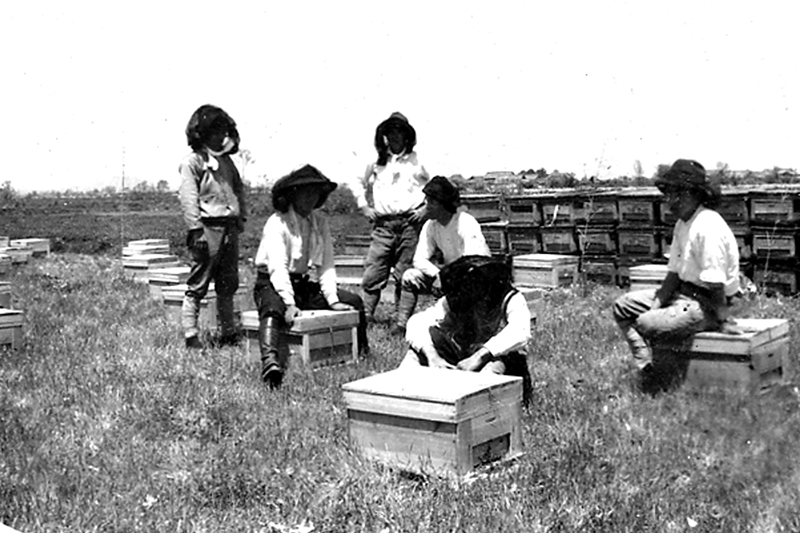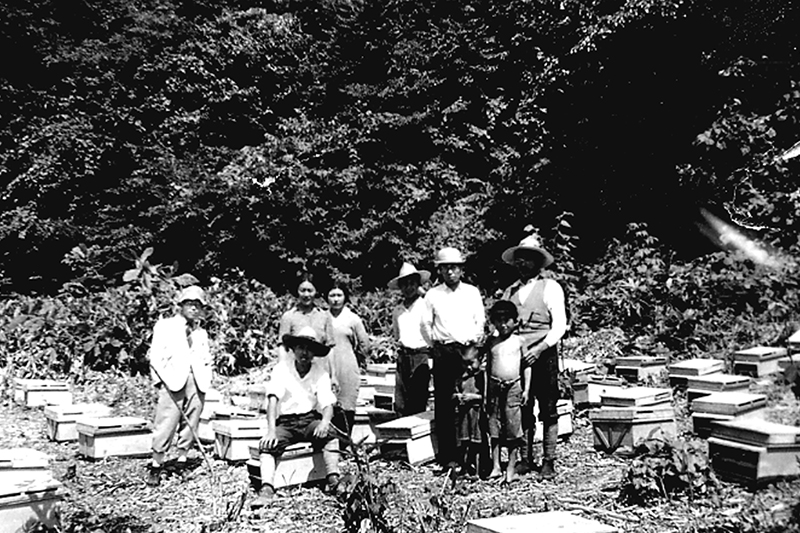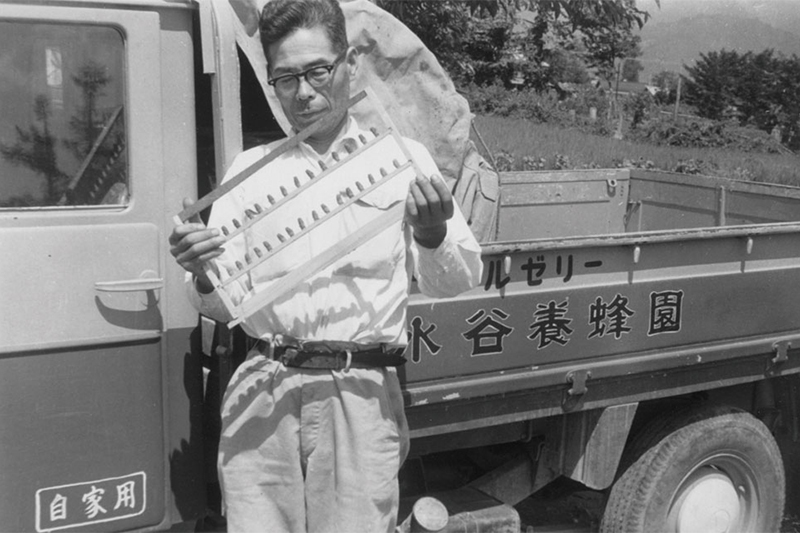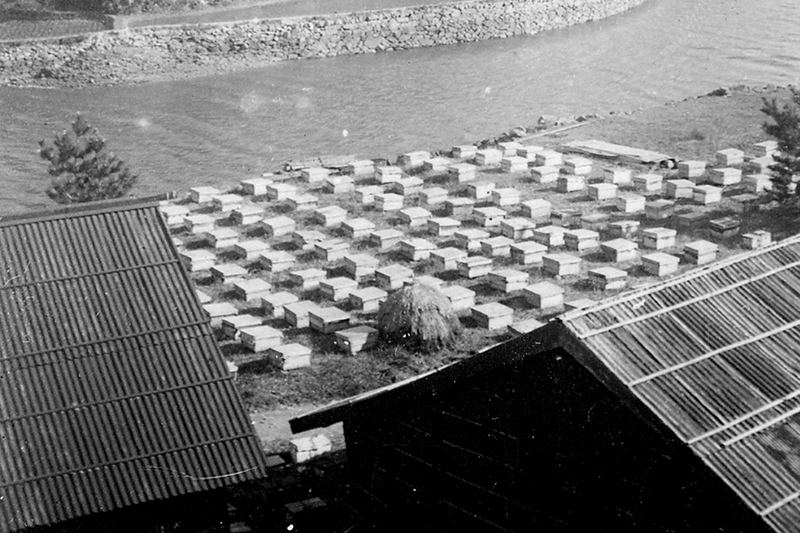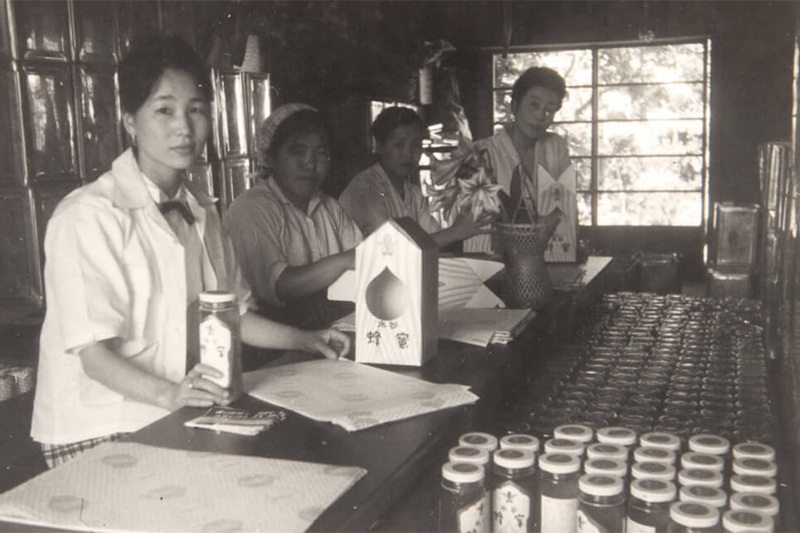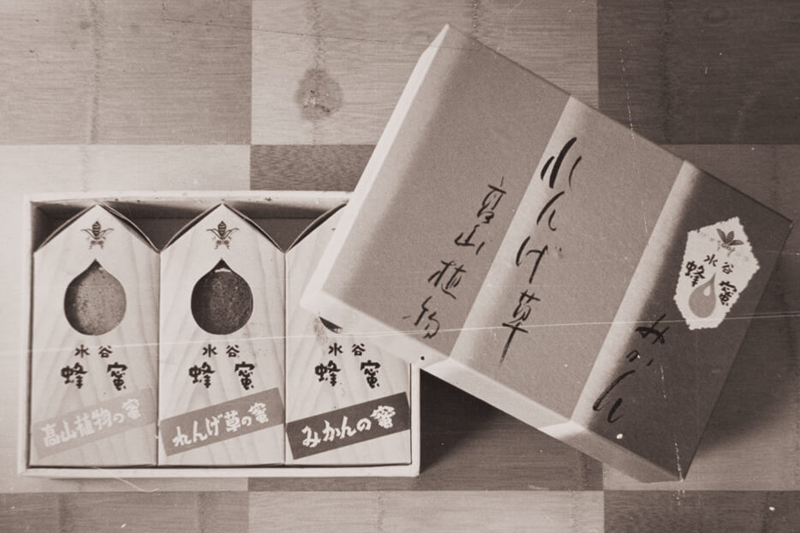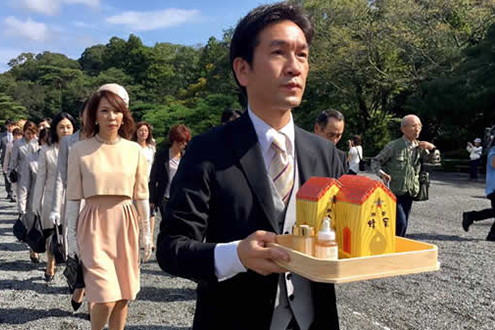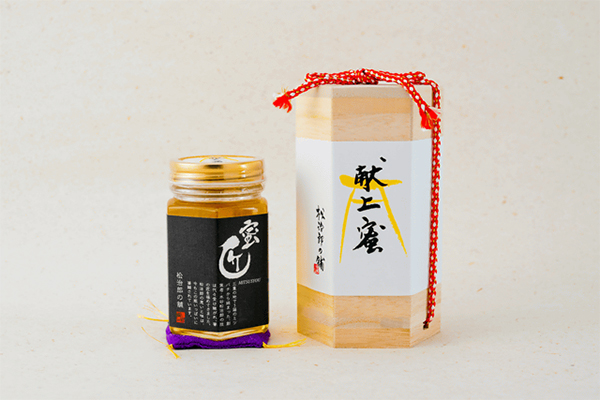It was second-generation beekeeper tai, who implemented translocation beekeeping at our farm, and laid the foundations of modern apiculture. In 1928, we officially established the Mizutani Bee Farm, and, after a lot of trial and error, we developed our translocation beekeeping technique. We have come up with safe transportation methods for honeybees when traveling from north to south to follow the flowering season, as well as technologies to protect the natural taste and nutrients of honey.
Seiichi, mastered the knowledge of the lives and habits of honey bees to the extent that people called him “the god of bees”. He put great effort into raising his successor and contributed greatly to the development of the beekeeping industry. In 1939, he founded the Japanese Beekeeping Association, and in 1965 and he was the first in Japan to succeed in the pollination of strawberries (cultivated in plastic houses), for which he received praise and recognition, and in 1991, he was awarded the Order of the Sacred Treasure.

